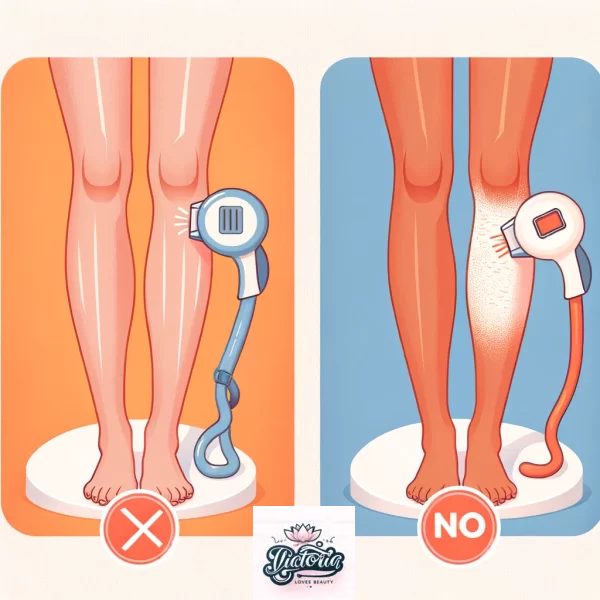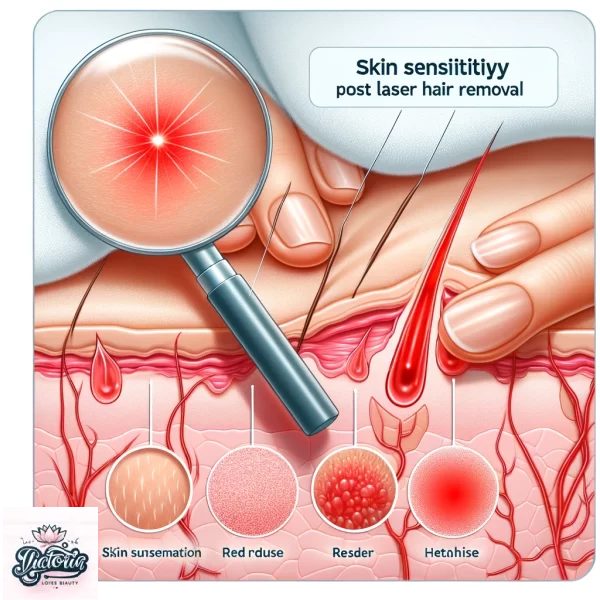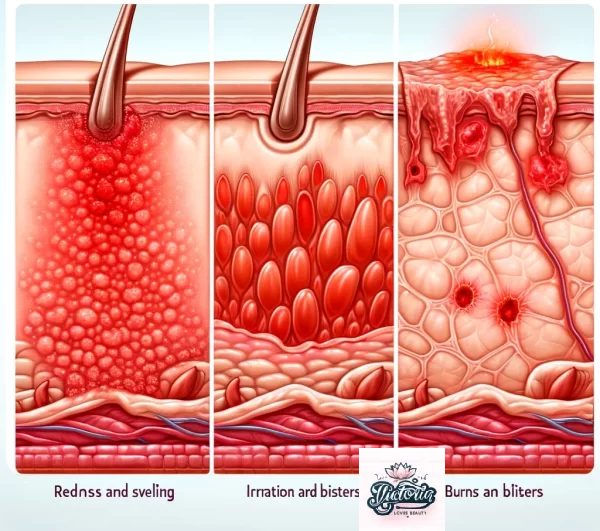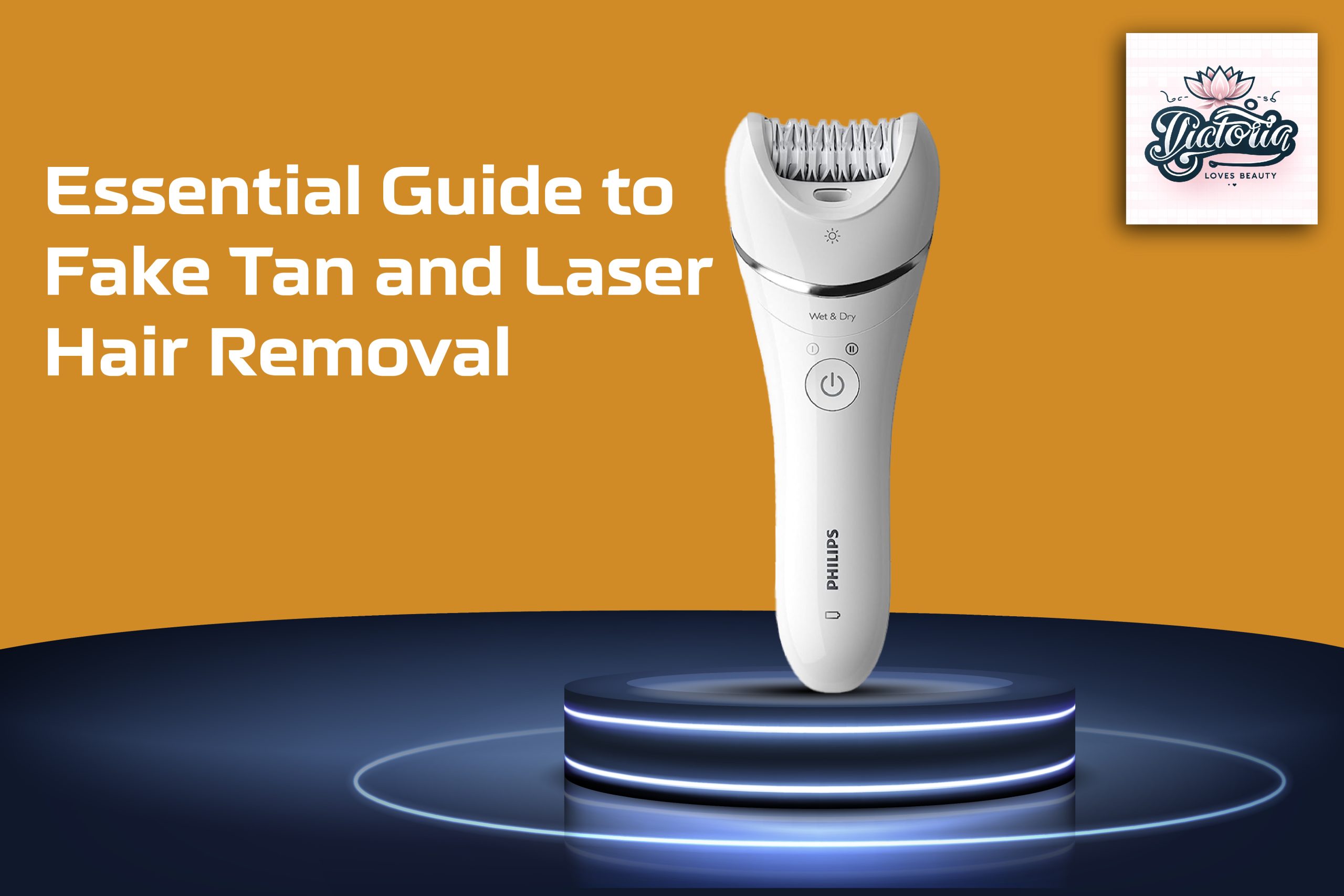Laser hair removal, a popular choice for achieving smooth, hair-free skin, uses advanced technology involving a concentrated beam of light to target and destroy hair follicles precisely. Promising long-lasting results, this method is a favorite for those looking to reduce unwanted hair. But a common question arises: Is using fake tan before or after laser hair removal safe? The answer isn’t a straightforward yes or no, as it involves understanding the scientific and safety aspects of the procedure. In this article, we’ll explore the complexities of using fake tan for laser hair removal, ensuring you make informed decisions for your skin care.

Understanding the Basics of Laser Hair Removal
The difference in skin and hair colors dramatically impacts how well laser hair removal works. The idea behind this technique is that the pigment in your hair, called melanin, is what the laser is aimed at. Heat is produced when the melanin absorbs the light from the laser. The tiny sacs in the skin where hairs originate, known as hair follicles, are subsequently seriously damaged by this heat. The damage that these follicles sustain is what stops hair development.
The best results with laser hair removal occur when the hair is noticeably darker than the skin. This is because darker hair is more straightforward for the laser to target since it contains more melanin. On the other hand, the laser finds it more challenging to distinguish between skin and hair when their colors are closer together. For this reason, those with darker skin tones and dark hair tend to get better results from the surgery.
Why Fake Tan and Laser Hair Removal Don’t Mix
- Risk of Skin Reactions: The most immediate concern with applying fake tan before laser hair removal is the risk of skin reactions. Fake tanning products can cause the skin to mimic a natural tan, appearing darker. This poses a problem as lasers, particularly those like the Alexandrite laser used for paler to mid-colored skin, are designed to target dark pigment. If your skin is artificially darkened, it becomes a competing target for the laser, leading to ineffective treatment and potential skin reactions like prolonged redness (erythema), burns, blisters, or irritation.
- Impact on Treatment Accuracy: Before starting laser treatments, your skin tone is evaluated to select the appropriate laser setting. Any change in skin color, like that caused by a fake tan, alters the accuracy of these settings. If you have tanned skin (real or fake) between sessions, the laser might react differently, leading to less effective treatments or even skin damage.
- Treatment Protracted or Delayed: Applying a fake tan either before or during your laser hair removal sessions may result in the necessity for follow-up treatments. You might achieve the target hair loss later since the changing skin color may undermine the effectiveness of each session. This implies that longer treatment times and higher costs may result from the need for more sessions than first anticipated.
- Risk of Hyperpigmentation: Using artificial tan also increases the chance of hyperpigmentation. A condition known as hyperpigmentation occurs when some skin becomes darker than the surrounding skin tone. Particularly in those with naturally darker skin or those more susceptible to pigmentation alterations, lasers pointed at skin that artificially darkened a fake tan can result in uneven skin tones and black blotches.
- Interference with Post-Treatment Healing: Your skin needs time to repair following a laser hair removal procedure. This natural healing process may be hampered if the skin contains chemicals from artificial tanners. These substances may react with the sensitive skin left over from laser therapy, causing pain, persistent redness, and increased sensitivity.
Skin Sensitivity Post Laser Hair Removal

Increased sensitivity is a frequent side effect of laser hair removal on the treated skin region. Despite being safe and often well-tolerated, this is a common reaction. Comprehending this sensitivity following treatment is essential to take appropriate care of your skin and prevent any problems.
Why Does Skin Become Sensitive?
- Laser Impact: The laser targets the melanin in hair follicles with intense light, which can cause mild irritation to the surrounding skin.
- Heat Reaction: The conversion of light to heat during the procedure can affect the top layer of the skin, leading to sensitivity.
- Natural Defense Mechanism: The body’s response to the laser treatment includes increased blood flow to the area, resulting in redness and swelling as part of the healing process.
- Disruption of Skin Barrier: The laser can disrupt the skin’s natural barrier, making it more susceptible to irritation and sensitivity.
- Dehydration of Skin: Laser treatments can dehydrate the skin, exacerbating sensitivity and discomfort.
Managing Post-Treatment Sensitivity
- Cooling the Skin: A cool compress or aloe vera gel can provide immediate relief from burning sensations or discomfort.
- Avoiding Heat: It’s advisable to avoid hot showers, saunas, and intense physical activity for the first 24-48 hours to prevent exacerbating the sensitivity.
- Gentle Skin Care: Use mild, fragrance-free products to cleanse the treated area. Harsh chemicals or exfoliants should be avoided.
- Moisturizing: Keep the skin hydrated with a gentle, soothing moisturizer. Hydrated skin tends to recover more efficiently.
- Sun Protection: Protecting the skin from the sun is crucial. Sun exposure can worsen sensitivity and increase the risk of hyperpigmentation.
- Avoid Fake Tans: As the skin is sensitive, applying fake tan can lead to irritation and uneven coloration. It’s best to wait until the skin has fully healed.
When to Get Medical Advice?
Although sensitivity is common, it’s crucial to contact your doctor or dermatologist if you suffer excruciating pain, evidence of an infection (like pus), or extreme swelling.
Risk of Skin Reactions:
The skin is susceptible following laser hair removal, which increases the possibility of different skin responses. Anybody thinking about getting laser hair removal must understand these hazards. The following are the main things to remember:

- Redness and Swelling: Common reactions resembling mild sunburn, usually temporary.
- Irritation and Discomfort: Mild tingling to sunburn-like sensation in the treated area.
- Burns and Blisters: Occurs rarely due to excessive laser energy absorption; more severe reaction.
- Hyperpigmentation/Hypopigmentation: Changes in skin color, with areas becoming darker (hyperpigmentation) or lighter (hypopigmentation) than surrounding skin.
- Itching: Healing skin may itch; it is essential to avoid scratching.
- Infection Risk: Rare but possible, especially with improper post-treatment care.
- Folliculitis: Inflammation of hair follicles, appearing as small, red bumps.
- Allergic Reactions: To gels or creams used during the treatment.
- Scarring: Very rare, usually due to neglecting post-treatment care.
- Exacerbation of Skin Conditions: Potential worsening of skin issues like eczema or psoriasis.
Safe Practices Around Laser Hair Removal
Taking care of your skin before and after laser hair removal is crucial to follow safe measures. Below is an explanation of the significance of these practices:
Before Treatment
- Removing Fake Tan: Getting rid of any false tan before your laser hair removal treatment is critical. This is because laser hair removal is most effective when there is a noticeable contrast between the color of your hair and your natural skin tone. In addition to lessening this contrast, fake tans darken your skin, making it more likely for the laser to target it. This increases the chance of skin responses and decreases the treatment’s efficacy.
- Exfoliating Your Skin: Exfoliation aids in eliminating dead skin cells and any traces of artificial tan. These leftovers have the potential to impede the laser’s path, reducing its efficiency. The laser can more effectively and directly target the hair follicles on clear, exfoliated skin.
- Shaving 12–24 Hours Ahead: There are two benefits to shaving the treatment region. It reduces the chance of burns, to start. The laser may burn excessive hair above the skin’s surface, which might be uncomfortable and harmful to the skin. Second, shaving facilitates the laser’s direct targeting of the hair follicles, which is where it must go to succeed. Shaving prevents extra hair from getting in the way of the laser’s ability to locate and target the follicles.
After Treatment
- Reapplying Fake Tan: You may return to utilizing fake tan products after your laser treatment. However, it’s best to hold off on doing so for a couple of days. Your skin may become more irritable and sensitive after the laser treatment. Immediately following, artificial tan might irritate the skin and cause pain or a response. By delaying a few days, you give your skin time to heal from the laser’s effects and lower your chance of discomfort.
- Skin Recovery Time: You need to give your skin time to recover throughout this waiting period. Although typically safe, the laser treatment exposes your skin to extreme heat and light, which may cause temporary skin sensitivity. By allowing your skin to recover, you may prevent problems and ensure that any treatments you use later on, like fake tan, won’t aggravate or damage your skin.
Alternative Tanning Options
Several substitute tanning choices are available for individuals who want to look sun-kissed but want to avoid developing problems with fake tans following laser hair removal. These techniques can give the skin a nice browned appearance without endangering its health and are often safer.

- Bronzing Powders and Lotions: Cosmetic bronzers are a great temporary solution. They come in powders, lotions, and creams, allowing for easy application and control over the intensity of the tan. They can be washed off easily and don’t interact with the skin’s melanin or healing process.
- Gradual Tanning Moisturizers: Daily moisturizers contain a small amount of self-tanning agents. They gradually build a subtle, natural-looking tan over time and are less likely to cause streaks or uneven tones.
- Spray Tanning: Professional spray tanning is a popular alternative. Done in salons, it involves spraying a fine mist of tanning solution onto your body. It’s a quick way to get a full-body tan without UV exposure. Ensure the skin has fully healed post-laser treatment before opting for this.
- Tanning Drops: These can be added to your regular moisturizer or skincare products for a tanning effect. They offer the flexibility to control the depth of the tan by adjusting the number of drops used.
Wash-Off Tanning Products: Unlike long-lasting fake tans, these products provide a temporary tan that can easily be washed off with soap and water. It is ideal for those wanting a tan for a special event.
Personal Care Tip
- Stay Hydrated: Keep your skin moisturized inside and out; drink plenty of water and use a hydrating lotion to maintain skin health.
- Gentle Skincare Routine: Use mild, fragrance-free products to avoid irritating post-treatment skin.
- Sun Protection: Always apply a broad-spectrum sunscreen with at least SPF 30 to protect the treated areas from UV damage.
- Avoid Harsh Exfoliation: Skip abrasive scrubs or exfoliants on the treated areas to prevent irritation.
- Cool Compresses for Comfort: Apply cool compresses if you experience discomfort or swelling after the treatment.
- Loose Clothing Post-Treatment: Wear loose, soft clothing to avoid friction on the treated areas.
- Monitor Your Skin: Regularly check your skin for unusual reactions and consult a professional.
- Rest and Recover: Allow your body to heal by resting enough and avoiding strenuous activities for a few days post-treatment.
- Healthy Diet: Eat a balanced diet rich in antioxidants to support skin health and recovery.
Professional Recommendations
Respecting the advice of medical professionals is essential to a safe and successful laser hair removal procedure. Before receiving treatment, dermatologists and laser treatment experts always recommend avoiding the sun and other hair removal techniques like waxing or plucking. You must adhere to their instructions for skin preparation in advance, such as shaving the affected area the day before.
Experts emphasize that to minimize issues following treatment, it’s critical to maintain the skin hydrated, avoid harsh skin care products, and avoid direct sunlight. Additionally, they usually advise against tanning artificially or partaking in activities like saunas or swimming for a certain amount of time. Adhering to these professional recommendations may maximize any risks associated with laser hair removal.
Final Thoughts
- Informed Decisions Are Key: Understanding the ins and outs of laser hair removal empowers you to make informed decisions for your skin’s health and beauty.
- Safety First: Always prioritize safety by adhering to pre- and post-treatment care guidelines. Remember, the care you give your skin matters as much as the treatment itself.
- Patience Pays Off: Laser hair removal is a process. Be patient with your body as it responds to the treatments, and remember that good things take time.
- Trust the Experts: Rely on professional advice. From preparation to aftercare, your dermatologist or laser technician knows best.
- Customized Care for Best Results: Everyone’s skin is unique, so tailor your skincare routine to your specific needs, especially after laser treatments.
- Embrace the Journey: Enjoy the journey to smoother, hair-free skin. Each step brings you closer to your desired results.
- Stay Informed and Updated: Keep up-to-date with the latest advancements and tips in laser hair removal for the best experience.
Remember, laser hair removal isn’t just a cosmetic choice; it’s a commitment to your skin’s long-term health and appearance. Treat it with care, and you’ll be rewarded with satisfying results.

Beauty enthusiast, mom on-the-go, and coffee addict (not necessarily in that order!). When she’s not chasing after her adorable toddler, Victoria is busy researching the latest beauty trends, testing out products, and sharing her discoveries with the world. Join her on this journey of self-care, empowerment, and finding your own unique spark of beauty!
